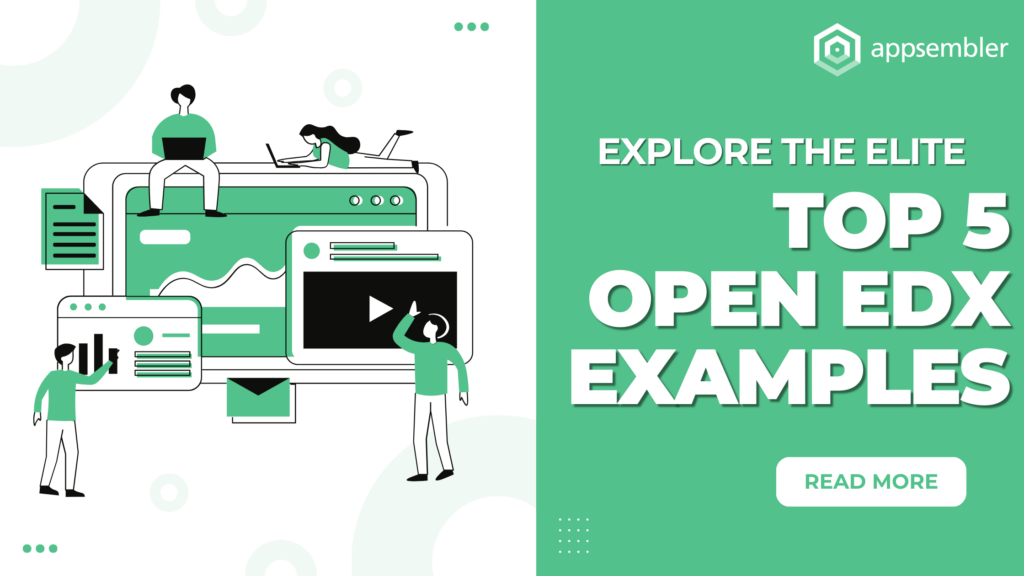In the vast and evolving world of digital education, Open edX stands as a pioneering platform, transforming the landscape of e-learning through its robust, flexible, and community-driven architecture. This article delves into the essence of Open edX, showcasing exemplary platforms powered by its technology, and explores the myriad benefits and considerations for institutions adopting this innovative system. From detailed Open edX examples to insightful discussions on its unique features and challenges, we unravel how this platform is shaping the future of education.
Key Takeaways:
- Open edX is a leading open-source platform for e-learning, known for its flexibility and customization options.
- Top 5 Open edX examples, including edX and MITx, offer diverse and innovative learning experiences.
- The platform provides significant benefits, such as enhanced course creation and global community support.
- Institutions face challenges like technical complexity and content development, yet solutions and best practices exist to overcome these hurdles.
- Open edX supports inclusivity and global reach, catering to a wide range of learners and educators worldwide.
Table of contents
Introduction
In the ever-evolving landscape of digital education, Open edX stands as a beacon of innovation and flexibility, offering a platform that empowers educators and learners alike. This powerful, open-source learning management system (LMS) has become instrumental in shaping the future of e-learning, providing tools for course creation, distribution, and management that rival and often surpass those of its competitors. The strength of Open edX lies in its ability to adapt—whether it’s to the needs of a small tutoring center or a large university—making it a preferred choice for institutions around the globe.
As we delve into the world of Open edX, we spotlight not just any platforms, but the crème de la crème that have harnessed its capabilities to remarkable effect. The criteria for this elite selection include innovation in course delivery and design, engagement strategies that captivate and retain learners, and the diversity of courses that cater to a wide range of interests and professional needs. These benchmarks ensure that our exploration into Open edX examples showcases the platforms that are not only leading the charge in online education but are also setting the standards for what’s possible in the realm of e-learning.
Through this lens, we aim to provide a comprehensive overview that not only highlights the exceptional features and courses these top sites offer but also shines a light on the impact they have on the global educational community. By examining these exemplary models, educators, institutions, and learners can gain insights into the potential of Open edX to transform their own educational offerings and experiences. So, let’s embark on this journey together, exploring the pinnacle of digital learning platforms powered by Open edX, where innovation meets inclusivity, engagement, and educational excellence.
What is Open edX?
At the heart of the transformative wave in e-learning and digital education lies Open edX, a robust, open-source Learning Management System (LMS) that has redefined the paradigms of virtual learning and instruction. Born out of a collaboration between Harvard University and the Massachusetts Institute of Technology (MIT) in 2012, Open edX was created with the vision of democratizing education, making high-quality learning accessible to anyone, anywhere, at any time. This platform embodies the spirit of innovation and openness, providing a rich set of features that support interactive learning experiences, from online courses to virtual labs.
Open edX serves as the foundation for edX, a massive open online course (MOOC) provider, but its reach extends far beyond a single website. Thanks to its open-source nature, institutions and organizations around the globe have adopted and customized Open edX to suit their unique educational needs. Whether it’s for a small academy or a sprawling university, Open edX offers unparalleled flexibility and scalability, allowing for the creation and dissemination of online courses that cater to a diverse range of subjects and disciplines.
Key features of Open edX include its intuitive course authoring tool, which enables educators to create engaging and interactive content with ease. Through the use of videos, quizzes, and discussion forums, instructors can construct a dynamic learning environment that fosters collaboration and deepens understanding. Additionally, Open edX’s advanced analytics tools offer insights into student progress and engagement, enabling educators to tailor their instruction to meet the needs of their learners effectively.
Beyond its technical prowess, Open edX’s scalability is a testament to its design. The platform can support a handful of students as effortlessly as it can a student body numbering in the thousands, without sacrificing performance or user experience. This makes it an ideal solution for educational institutions looking to expand their online learning offerings or organizations seeking to provide training and professional development opportunities.
In the realm of e-learning and virtual education, Open edX stands out as a beacon of possibility, embodying the ideals of accessibility, quality, and innovation. Its history is a story of continuous growth and adaptation, reflecting the evolving demands of learners and educators in a digital age. For institutions and organizations looking to push the boundaries of what’s possible in education, Open edX offers a proven, flexible platform that has already helped shape the future of learning.
Top 5 Sites Powered by Open edX
Navigating the vast expanse of digital education, one encounters myriad platforms promising transformative learning experiences. Yet, among these, Open edX-powered sites stand out, not merely for their technological sophistication but for their commitment to educational excellence and innovation. Here, we explore the top five Open edX examples, each exemplifying the platform’s versatility and impact on the global educational landscape.
1. edX
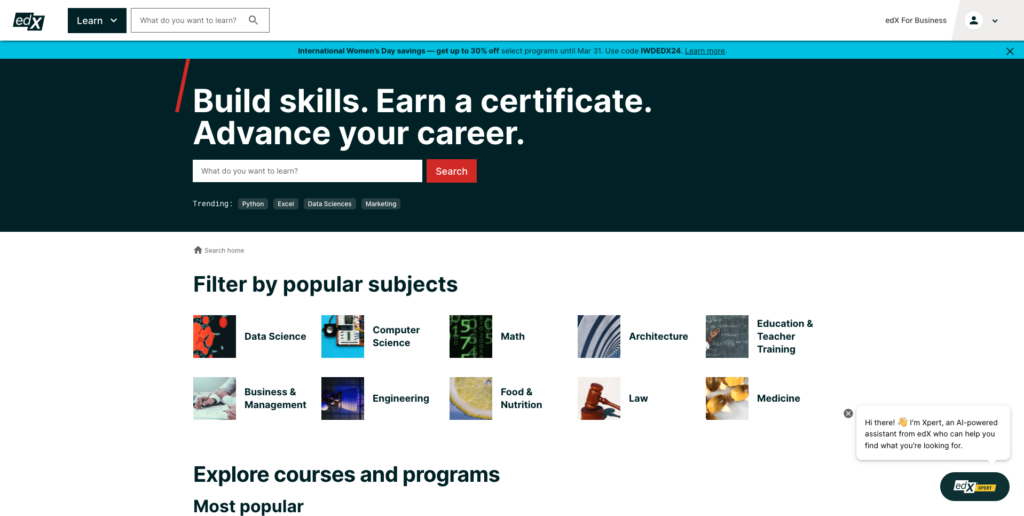
Founded by Harvard University and MIT in 2012, edX is the progenitor of Open edX and remains its most illustrious example. With a mission to democratize education, edX offers courses from the world’s best universities and institutions to learners across the globe, free of charge. Unique features such as MicroMasters programs and Professional Certificates enable learners to advance their careers or pursue academic interests without the constraints of traditional education. Through its global reach, edX has impacted millions, offering courses ranging from computer science to philosophy, and continues to innovate in the delivery and design of online education.
2. France Université Numérique (FUN)
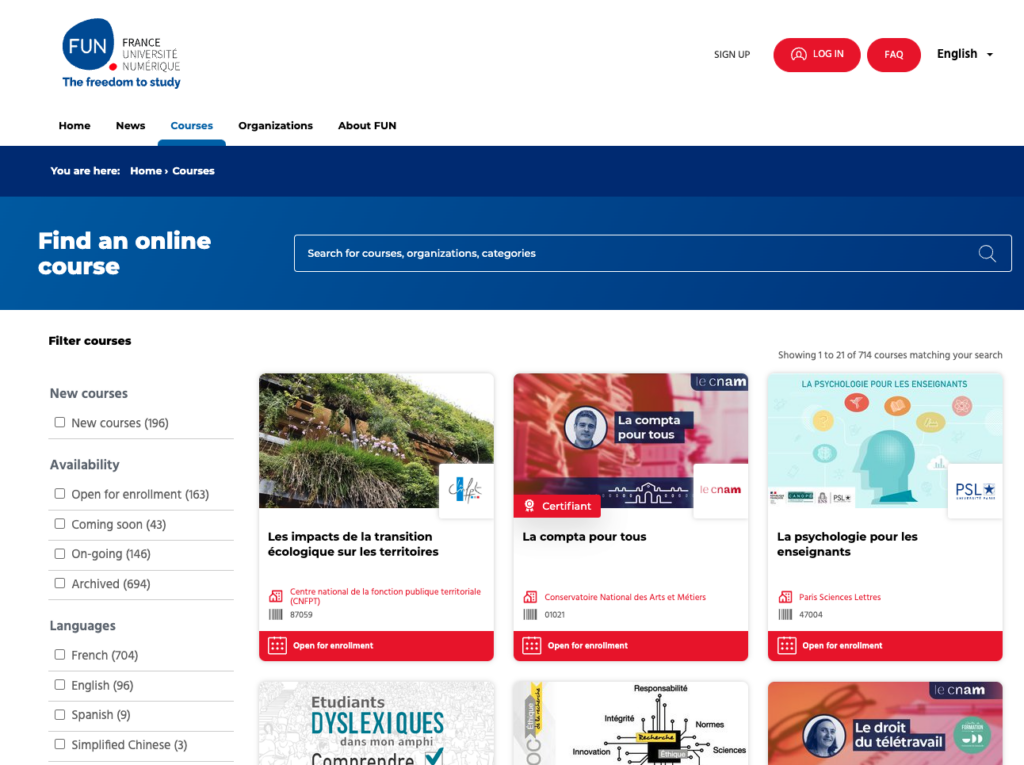
As the French government’s response to the rising demand for online learning, FUN serves as a shining example of how national education initiatives can leverage Open edX. Catering primarily to French-speaking students, FUN highlights the adaptability of Open edX to support diverse linguistic groups. It boasts innovative features like interactive textbooks and peer assessments, strengthening France’s position in global education. FUN’s partnerships with both French and international universities underscore its commitment to expanding access to quality education.
3. Stanford Online
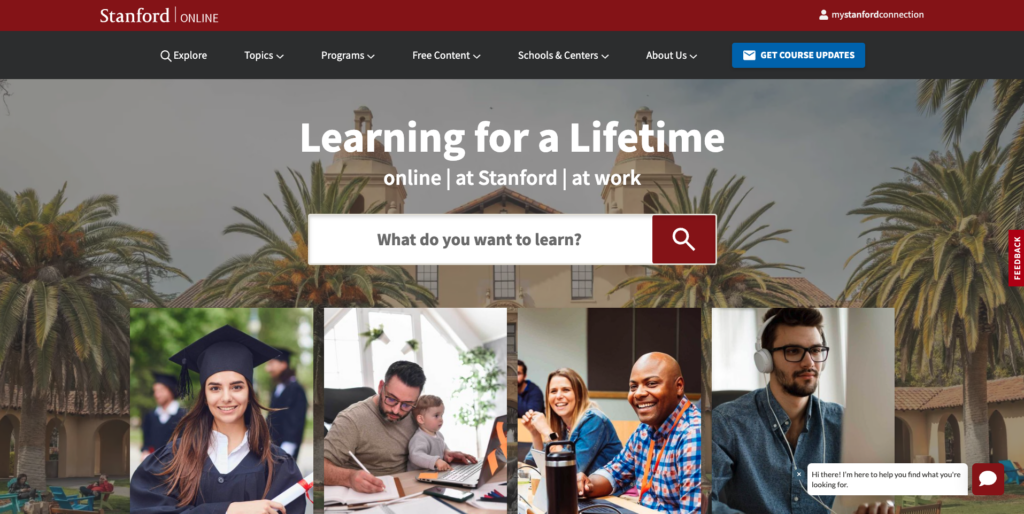
Stanford University’s foray into online education, Stanford Online, harnesses Open edX to extend its educational resources beyond its Silicon Valley campus. Focused on creating a deeply engaging learning environment, Stanford Online excels in user engagement through vibrant forums and collaborative projects. Its diverse course materials, developed by renowned faculty and industry leaders, cover topics from machine learning to human rights. Stanford Online’s commitment to community building and inclusive learning exemplifies the potential of Open edX to transcend traditional educational boundaries.
4. MITx
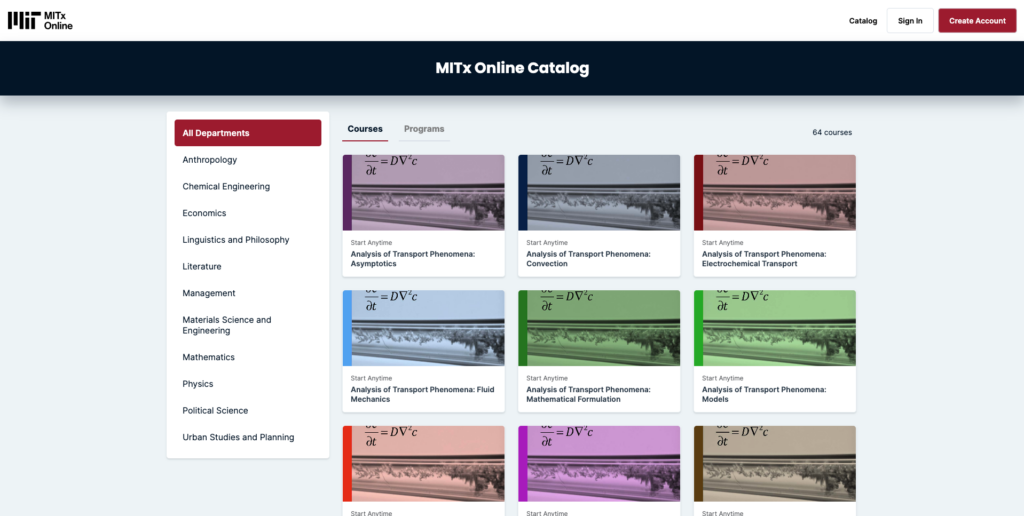
The Massachusetts Institute of Technology (MIT) has long been at the forefront of educational innovation, and its MITx platform is no exception. Utilizing Open edX, MITx offers an array of courses that mirror the institute’s cutting-edge research and academic rigor. Its clean, user-friendly interface and unique certification options provide learners with a tangible sense of achievement and recognition. With a strong emphasis on science, technology, engineering, and mathematics (STEM) subjects, MITx’s global reach and multilingual support make it a beacon for aspiring scientists and engineers worldwide.
5. Microsoft Learn

A powerhouse in the tech industry, Microsoft leverages Open edX through Microsoft Learn to provide specialized training and professional development in its technologies. Emphasizing blended learning, it combines online self-paced courses with practical, hands-on labs and workshops. The platform’s success stories and notable alumni, many of whom have advanced to significant roles within the tech industry, testify to its efficacy. By integrating analytics and continuous feedback, Microsoft Learn continually refines its offerings, ensuring they meet the evolving needs of the tech community.
These five Open edX examples not only showcase the platform’s vast capabilities but also illustrate the diverse ways in which institutions and organizations can utilize it to achieve their educational missions. From democratizing education to advancing technical skills, Open edX platforms are reshaping the educational landscape, one learner at a time.
Benefits of Using Open edX
In the realm of e-learning, Open edX emerges as a titan, offering unparalleled advantages that cater to the intricate needs of educators and learners alike. This powerful platform stands out for its exceptional flexibility in course creation and management, enabling educators to craft learning experiences that are not just informative but truly transformative. Through Open edX, instructors have the freedom to design courses with varied content types, interactive tools, and assessment methodologies, ensuring that each course is tailored to the unique learning objectives and styles of their students.
For learners, Open edX offers an accessible gateway to a world of knowledge previously confined within the walls of elite institutions. Whether seeking to advance in a current career or explore entirely new fields, learners find in Open edX a vast repository of courses covering virtually any subject imaginable, from the sciences to the humanities. The platform’s user-centric design and responsive interface mean that accessing this wealth of knowledge is possible anytime, anywhere, democratizing education on a global scale.
Moreover, the Open edX ecosystem is supported by a vibrant, worldwide community of developers, educators, and learners who continuously contribute to its improvement. This collaborative spirit not only enhances the platform’s capabilities but also provides users with an extensive network of support. From technical troubleshooting to pedagogical strategies, the Open edX community stands ready to assist, ensuring that every user, regardless of their technical proficiency or educational background, can maximize the benefits of this transformative learning platform.
Challenges and Considerations
Implementing Open edX, while transformative, does not come without its set of challenges for institutions eager to embark on the journey of digital education. One of the primary hurdles is the technical complexity associated with deploying and managing the platform. Open edX, with its robust and scalable architecture, demands a certain level of technical expertise to fully harness its potential, often requiring dedicated IT support for seamless operation.
Another consideration is the need for ongoing content development and curation. The dynamic nature of e-learning necessitates that course materials not only be comprehensive and engaging but also continuously updated to reflect the latest advancements in the field. This requires educators to invest significant time and resources in course design and maintenance, which can be daunting for institutions with limited faculty or resources.
However, these challenges are far from insurmountable. Solutions and best practices include leveraging the global Open edX community, where institutions can find a wealth of resources, from technical documentation to pedagogical advice. Engaging with this community can significantly ease the technical burden, offering insights into best practices for platform deployment and management.
Furthermore, institutions can adopt a collaborative approach to content creation, involving students, alumni, and industry professionals in the process. This not only enriches the learning material but also fosters a sense of community and belonging among users. By embracing these strategies, institutions can effectively navigate the complexities of implementing Open edX, unlocking the full potential of digital learning for educators and learners alike.
Conclusion
In the digital education era, Open edX has emerged as a cornerstone, epitomizing the revolution that is democratizing learning across the globe. Through its innovative platform, Open edX has empowered educators to craft engaging, dynamic courses and enabled learners from all walks of life to access unparalleled educational opportunities. The examples discussed underscore the platform’s versatility, from edX’s comprehensive offerings to specialized platforms like Microsoft Learn, each harnessing Open edX to break new ground in online learning.
These Open edX examples represent just a glimpse of the platform’s potential to transform educational delivery and access. As we continue to navigate the complexities and challenges of digital education, Open edX stands as a beacon of innovation, flexibility, and community support. It invites us all—educators, learners, and institutions—to explore its capabilities and contribute to the ever-evolving landscape of e-learning. In doing so, we not only enhance our own knowledge and skills but also contribute to a more informed, empowered, and connected world.
Frequently Asked Questions
Open edX distinguishes itself through its open-source nature, allowing for unparalleled customization and flexibility. Unlike many other e-learning platforms, Open edX enables institutions to modify its code to tailor the learning experience to their specific needs. This capability fosters innovation in course delivery, assessment methods, and learner engagement strategies. Additionally, Open edX’s robust global community contributes to its continuous improvement, sharing best practices and developments that enrich the platform for all users.
Yes, individuals and organizations can host their own Open edX instance. This flexibility allows for extensive customization, enabling users to adapt the platform to their unique educational objectives and technological environments. Hosting an Open edX instance requires some technical expertise, particularly for customization and ongoing maintenance. However, the platform’s supportive community and comprehensive documentation provide valuable resources to guide users through the process.
Open edX platforms offer a variety of certification options to acknowledge learner achievements. These include verified certificates for individual courses, MicroMasters programs that offer a pathway to credit at partner universities, and Professional Certificate programs designed to advance career skills. Certifications on Open edX platforms are recognized by employers and educational institutions worldwide, adding significant value to the learner’s professional and academic endeavors.
Open edX platforms are designed with accessibility in mind, adhering to the Web Content Accessibility Guidelines (WCAG) to ensure that educational content is accessible to learners with disabilities. Features such as keyboard navigation, screen reader support, and alternative text for images help create an inclusive learning environment. Open edX’s commitment to accessibility ensures that all learners, regardless of physical or cognitive challenges, can benefit from the platform’s educational offerings.
Open edX provides instructors with comprehensive analytics and reporting tools to monitor learner progress and engagement. These tools offer insights into course interactions, completion rates, and assessment performances, enabling educators to identify areas where learners might need additional support. Instructors can use this data to make informed decisions about how to improve course content and delivery, ultimately enhancing the learning experience for all participants.
Open edX supports multiple languages, making it an ideal platform for international learners. The platform’s interface can be localized to accommodate various languages, and course content can be created in any language, providing a truly global learning experience. This multilingual capability, coupled with Open edX’s scalable architecture, enables educators to reach a diverse audience, breaking down barriers to education across different regions and cultures.
